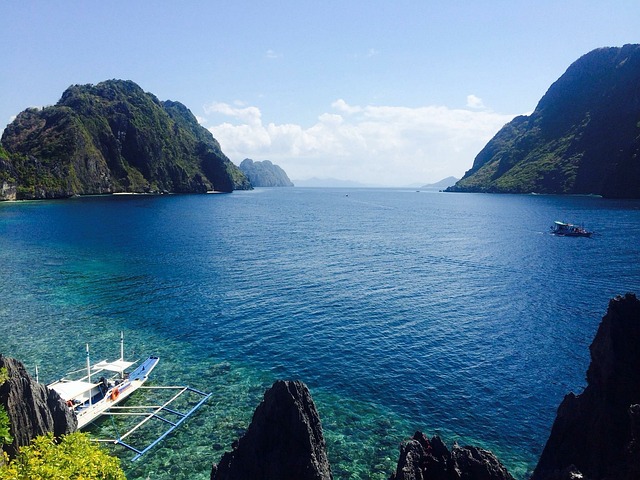Understanding Your Drone’s Camera Capabilities
To excel in drone photography, familiarize yourself with your drone’s camera specs. Key features include:
- Resolution: Determines image clarity. Most drones offer HD or 4K.
- Sensor Size: Affects low-light performance and depth of field.
- Lens: Understand focal length and field of view for composition.
- ISO Range: Higher ISO settings boost sensitivity to light.
- Shutter Speed: Influences exposure time and motion blur control.
- Frame Rate: Important for smooth video capture, particularly in slow motion.
- Image Stabilization: Essential for sharp images; check for gimbal support.
- File Formats: RAW supports extensive post-processing; JPEG offers convenience.
Mastering these functions enhances the quality of aerial imagery substantially.
Mastering the Art of Composition in Aerial Photography
In aerial photography, composition governs the elegance and impact of the image. Photographers need to consider several key factors:
- Rule of thirds: Positioning key elements off-center often creates a balanced and engaging photo.
- Leading lines: Utilize natural or manmade lines to guide the viewer’s eye through the composition.
- Patterns and textures: Exploit the unique perspectives of drone photography to highlight intricate patterns and textures.
- Depth: Layer elements at varying distances to add depth and dimension to your photos.
- Framing: Use the environment to create natural frames around your subject to draw attention.
Each aerial shot should convey a story or emotion, achieved through thoughtful arrangement of these elements. With practice, intuitive composition elevates the caliber of aerial imagery.
Choosing the Right Time of Day for Optimal Lighting
Understanding the sun’s position is essential for drone photographers. The golden hours—shortly after sunrise and before sunset—offer warm, diffused light ideal for landscapes. Midday lighting can be harsh and create heavy shadows, which might be used creatively but is generally not preferred. Conversely, during an overcast day, the clouds act as a natural diffuser, providing soft, even lighting that can reduce glare and shadows on subjects. Hence, drone operators must:
- Observe the day’s weather forecast.
- Schedule flights during golden hours for enhanced natural tones.
- Avoid midday flights to minimize harsh shadows unless intended artistically.
- Utilize overcast conditions to achieve soft, uniform lighting effects.
Exploring Perspectives: High Altitude vs Close Proximity Shots
When personal drone photographers ascend to high altitudes, they capture expansive landscapes, showcasing nature’s vastness or the urban sprawl’s complexity. High altitude shots provide a unique macro perspective, often revealing patterns and shapes unseen from the ground. In contrast, close proximity shots deliver a micro perspective — they offer a detailed view into the life and structure of the immediate area. Here, photographers can emphasize textures, colors, and the interplay between light and shadow to tell a more intimate story. Both techniques require skillful maneuvering:
- High Altitude Shots:
- Achieve wide, panoramic views
- Require careful attention to weather conditions
- Implement composition principles to avoid clutter
- Close Proximity Shots:
- Capture fine details and subtle nuances
- Demand precise control to manage framing and focus
- Explore creative angles and perspectives through closer inspection
These perspectives, when mastered, greatly enhance a photographer’s visual storytelling capacity.
Weather Considerations for Clear and Impactful Images
Weather significantly influences drone photography. Here are some considerations:
- Lighting: Capture photographs during golden hours—after sunrise or before sunset—when natural light is soft and diffused.
- Wind: Light winds are manageable, but high winds can destabilize drones and blur images. Always check wind forecasts before flights.
- Rain: Moisture can damage drone electronics. Avoid flying in rainy conditions to protect equipment and ensure clear shots.
- Temperature: Extreme cold or heat affects battery life and drone performance. Ensure batteries are at optimal temperature before use.
- Cloud Cover: Overcast skies offer even lighting and reduce shadows and glare but assess if clouds might obstruct your intended subjects.
- Fog and Mist: These can create atmospheric shots but may also dampen sharpness. Evaluate whether the effect aligns with your creative vision.
Utilizing Advanced Drone Features for Dynamic Shots
To capture breathtaking aerial photographs, one must master their drone’s advanced features. Beginners should explore the following:
- Obstacle Avoidance: Navigate difficult terrains safely by utilizing this feature to prevent collisions.
- Gimbal Controls: Use these for stable, smooth footage, maintaining focus on the subject regardless of drone movement.
- Auto-Tracking: Keep your subject in frame without manual control by activating this function; it’s perfect for moving targets.
- Flight Modes: Experiment with different modes like Course Lock or Point of Interest to create mesmerizing cinematic effects.
- Bracketing: For challenging lighting, use AEB (Auto Exposure Bracketing) to take multiple shots at different exposures, thus ensuring the perfect photo is captured.
By leveraging these capabilities, novices can achieve professional-level drone photography with practice.
The Role of Post-Processing in Enhancing Your Photos
Post-processing is a pivotal step in drone photography that allows photographers to refine their aerial images. Through skilled manipulation using software such as Adobe Lightroom or Photoshop, one can adjust exposure, contrast, and saturation to accentuate the visual appeal. Sharpness can be enhanced to bring out details, and color grading can be applied to evoke emotions or highlight specific aspects of the landscape. Additionally, cropping and straightening can help achieve the desired composition, while noise reduction techniques can improve image clarity. Skillful post-processing transforms good aerial shots into remarkable masterpieces that captivate viewers.

Adhering to Drone Photography Laws and Regulations
When engaging in drone photography, it is crucial to follow the laws and regulations set forth by the Federal Aviation Administration (FAA) and local authorities. Here are essential guidelines to comply with:
- Register your drone with the FAA if it weighs over 0.55 pounds.
- Fly at or below 400 feet in controlled airspace and obtain authorization through LAANC (Low Altitude Authorization and Notification Capability) where required.
- Always keep your drone within visual line-of-sight.
- Avoid flying near other aircraft, especially near airports.
- Do not fly over groups of people, public events, or stadiums full of people.
- Respect privacy laws; refrain from photographing private property without consent.
- Be aware of and conform to any temporary flight restrictions (TFRs).
Following these rules will help ensure a safe and legally compliant drone photography experience.
Safety First: Conducting Pre-Flight Checks and Considerations
Before taking to the skies, it’s crucial for drone pilots to perform comprehensive pre-flight checks to ensure both safety and compliance with regulations. These preparations include:
- Battery Inspection: Verify that the drone’s battery is fully charged and securely fastened. Check for any signs of damage or swelling.
- Firmware Updates: Ensure the drone’s firmware is current for optimal performance and safety features.
- Environmental Assessment: Scout the area for obstacles that could impact flight, such as power lines or tall buildings. Consider weather conditions and wind speeds.
- Regulatory Compliance: Familiarize oneself with local drone flight regulations, including no-fly zones and altitude limits.
- System Check: Test the drone’s control system, camera operation, and GPS functionality for reliability.
- Emergency Procedures: Review and understand the steps to take in case of an unforeseen in-flight malfunction or emergency situation.
By methodically following these steps, drone enthusiasts can help to mitigate risks and enjoy a safe, successful flight experience.
Developing a Unique Style in Drone Photography
When venturing into drone photography, cultivating a distinct style sets one apart. Start by studying various photographers, noting preferences in composition, angles, and color palettes. Experiment with different times of day for varied lighting conditions, and use weather to your advantage to create mood. Developing a signature involves consistent practice. Pay attention to feedback on portfolio work to understand what resonates with audiences. Moreover, mastering post-processing can vastly differentiate your imagery, allowing personal artistic vision to shine through in every aerial shot. Personal style evolves, so remain open to new techniques and perspectives.
Essential Accessories and Gear for the Avid Drone Photographer
For the drone photographer committed to capturing exceptional aerial imagery, certain accessories are indispensable:
- High-Quality Camera Filters: Polarizing and ND filters regulate light, reducing glare and improving image clarity.
- Extra Batteries: To maximize flight time, ensure a supply of charged batteries.
- Portable Landing Pad: Protects the drone from hazardous takeoff and landing environments.
- Propeller Guards: Offers protection against collisions and assists in safer flight operations.
- Memory Cards: High-speed, large-capacity memory cards are crucial for storing high-resolution photos and videos.
- Carrying Case: A reliable case ensures the safe transport of the drone and its accessories.
- Remote Controller Sunshade: Enhances screen visibility in bright conditions for optimal control.
By integrating these essential items into their gear, drone photographers can enhance their shooting experience and safeguard their equipment.
Building a Stunning Drone Photography Portfolio
To craft an impressive drone photography portfolio, one must carefully curate their work, showcasing diversity in subjects while maintaining a coherent style. A beginner should:
- Focus on including a variety of landscapes, cityscapes, and perhaps abstract patterns seen from above.
- Capture images during different times of the day to display the effect of changing light.
- Incorporate a mix of wide-angle shots and close-ups to demonstrate control over framing.
- Edit photos consistently to forge a signature style that speaks to the viewer.
- Select only the highest quality images that are sharp, well-composed, and visually striking.
- Include a brief description for each photo, providing context that may resonate with the audience.






















0 Comment